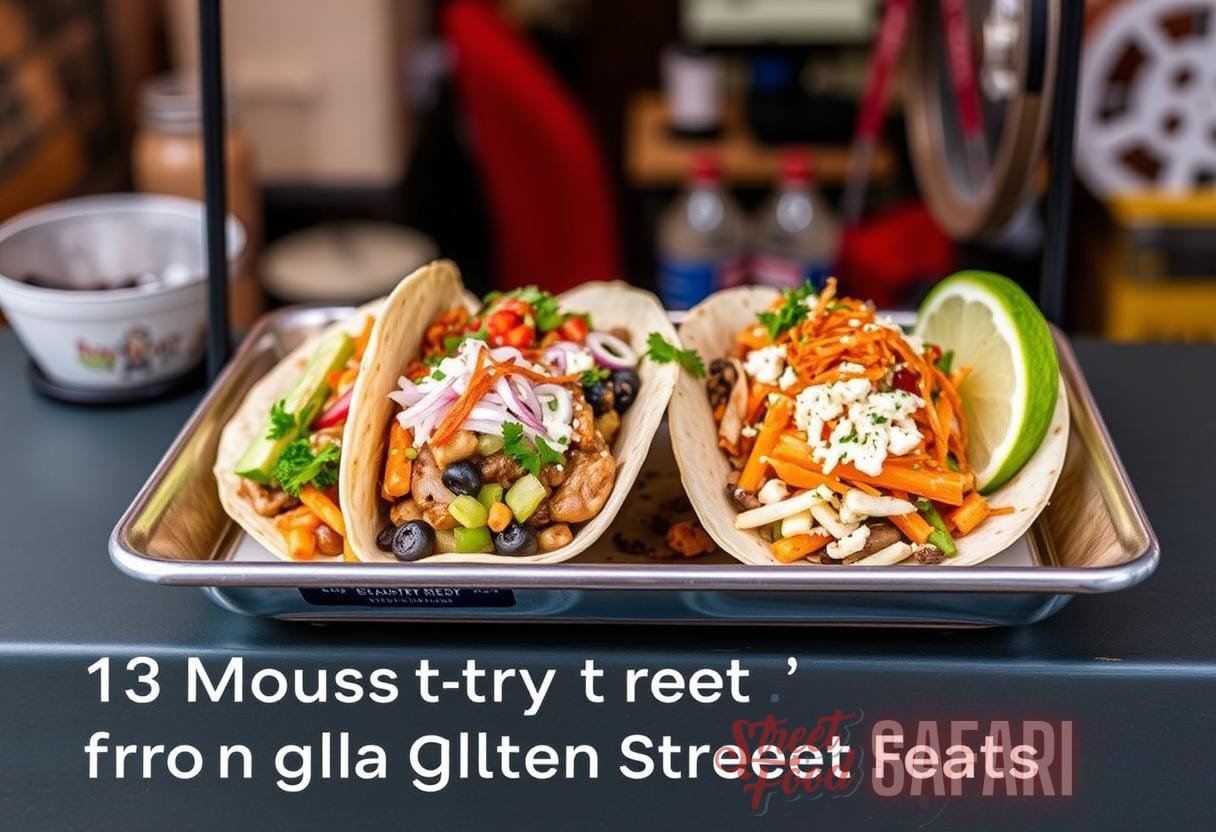The Science of Street Food: Unraveling the Culinary Chemistry Behind Irresistible Urban Delights
Street food has become an integral part of our urban culture, offering delectable delights that tantalize the taste buds and leave us craving for more. From mouth-watering tacos in Mexico City to savory kebabs in Istanbul, street food has the power to transport us to different corners of the world through its diverse flavors. But have you ever stopped to wonder what makes street food so delicious and addictive?
In this article, we will take a deep dive into the world of street food and explore the science behind its irresistible taste. From the chemical reactions that occur during cooking to the art of flavor pairing, we will unravel the culinary secrets that make street food so alluring. So put on your apron and get ready to discover the street science behind your favorite urban delights!
The Power of Umami: The Fifth Taste
When it comes to street food, umami is the secret ingredient that takes the flavors to a whole new level. Umami, which translates to “pleasant savory taste” in Japanese, is one of the five basic tastes, alongside sweet, sour, salty, and bitter. It was first discovered by Japanese chemist Kikunae Ikeda in 1908, and its existence was officially recognized in the early 2000s.
Umami is created by the presence of glutamate, an amino acid found in various food sources such as tomatoes, cheese, mushrooms, and meat. It stimulates specific taste receptors on our tongues, enhancing the overall flavor profile of a dish. This is why adding a dash of soy sauce or a sprinkle of parmesan cheese can instantly elevate the taste of street food.
Various cooking techniques used in street food also contribute to the development of umami flavors. Grilling, roasting, and charring ingredients intensify their natural umami content, creating a depth of flavor that is hard to resist. For example, the crispy charred edges of a grilled skewer or the smoky aroma of a sizzling hot dog are all thanks to the Maillard reaction, a chemical process that occurs when proteins and sugars are exposed to high heat.
Moreover, the combination of umami-rich ingredients is a common practice in street food. Think of a classic bowl of ramen packed with savory pork broth, tender slices of pork belly, and a sprinkle of umami-rich seaweed. The synergy created by these ingredients enhances the overall umami taste, leaving you craving for more.
The Flavor Pairing Magic
Have you ever wondered why certain ingredients just seem to go perfectly together? The answer lies in the science of flavor pairing. The combination of different flavors creates complex taste profiles that can be both complementary and contrasting.
In the realm of street food, flavor pairing is an art form. Street food vendors have mastered the art of combining ingredients to create mouth-watering dishes that keep customers coming back for more. Let’s take the iconic hot dog, for example. The combination of a salty and savory sausage, a tangy mustard, and a slightly sweet bun creates a perfect balance of flavors.

Scientists have even conducted studies to uncover the science behind successful flavor pairings. A team of researchers from the University of Cambridge analyzed a dataset of over 56,498 recipes to identify the most common flavor combinations. They found that ingredients with overlapping flavor compounds were more likely to be paired together.
For instance, the combination of chocolate and vanilla, which are both rich in vanillin, creates a harmonious flavor profile. Similarly, the pairing of tomatoes and basil, both of which contain high levels of methyl salicylate, creates a complementary taste. These findings provide insight into the science behind flavor pairing and explain why certain combinations just work so well together.
- Unlocking the Secret Recipes: Dive into the Lip-Smacking World of Classic City Delicacies
- Street Delights
The Role of Texture in Street Food
When it comes to street food, texture plays a crucial role in our overall enjoyment of a dish. The interplay between crispy, crunchy, soft, and chewy textures creates a multisensory experience that adds to the pleasure of eating.
One of the most beloved textures in street food is crispiness. The sound and sensation of biting into a perfectly crispy samosa or a golden-brown fried chicken are irreplaceable. Achieving crispy textures in street food is a delicate balance between cooking time, temperature, and ingredients. The application of high heat and the presence of starches or batters create the signature crunch that we all crave.
On the other hand, soft and chewy textures also have their place in street food. Think of a steaming bowl of dumplings with their delightfully chewy exterior and juicy filling. The texture of street food adds dimension to the eating experience, creating a satisfying mouthfeel that keeps us coming back for more.
Texture also plays a role in the perception of flavors. Studies have shown that the texture of food can influence our perception of its taste. For example, the crunchiness of a potato chip can make it taste saltier, while the creaminess of ice cream enhances its sweetness. Street food vendors are masters at creating the perfect balance of flavors and textures to create a memorable eating experience.
Food Safety in Street Food
While street food is undeniably delicious, concerns about food safety often arise. It is important to note that not all street food is unsafe to consume. In fact, street food vendors in many countries adhere to strict hygiene practices to ensure the safety of their food.
That being said, there are certain guidelines that consumers should follow when indulging in street food. Here are some tips to ensure food safety:

- Choose vendors who have a clean and hygienic food preparation area.
- Look for vendors who use gloves or utensils to handle food.
- Opt for cooked food that is served hot and has not been sitting out for long periods.
- Avoid raw or undercooked food, especially meat and seafood.
- Pay attention to the cleanliness of cutlery and plates.
By being mindful of these guidelines, you can enjoy street food without compromising your health. It is also worth mentioning that street food provides a unique opportunity to experience the local flavors and culinary traditions of a city. So, don’t let food safety concerns hold you back from exploring the street food scene!
The Art of Presentation
When it comes to street food, presentation is key. Street food vendors understand that a visually appealing dish is more likely to attract customers and make their taste buds tingle with anticipation.
The art of presentation in street food goes beyond just aesthetics. Studies have shown that the way food is presented can influence our perception of its taste. For example, food that is arranged in an appealing manner and presented on a clean plate is often considered to taste better.
Street food vendors utilize various techniques to make their dishes visually appealing. Colorful ingredients, garnishes, and attention to detail all contribute to the overall presentation. Take, for example, the vibrant and eye-catching colors of a classic Mexican taco with its fresh cilantro, diced tomatoes, and tangy salsa. The visual appeal of street food creates a sensory experience that heightens our enjoyment of the dish.
Conclusion
Street food is a culinary treasure trove, showcasing the flavors and traditions of a city through delectable bites. Whether it’s the umami-rich flavors, the art of flavor pairing, the diverse textures, or the visual appeal, street food has a way of captivating our senses.
By understanding the science behind street food, we can appreciate the craftsmanship and expertise that goes into creating these irresistible urban delights. So the next time you indulge in your favorite street food, take a moment to savor the flavors and appreciate the street science that makes it so irresistible.
For more mouth-watering street food inspiration, check out our Street Delights and dive into the lip-smacking world of classic city delicacies. You can also explore the unlock the secrets of street food by reading our article on Unlocking the Secret Recipes.


